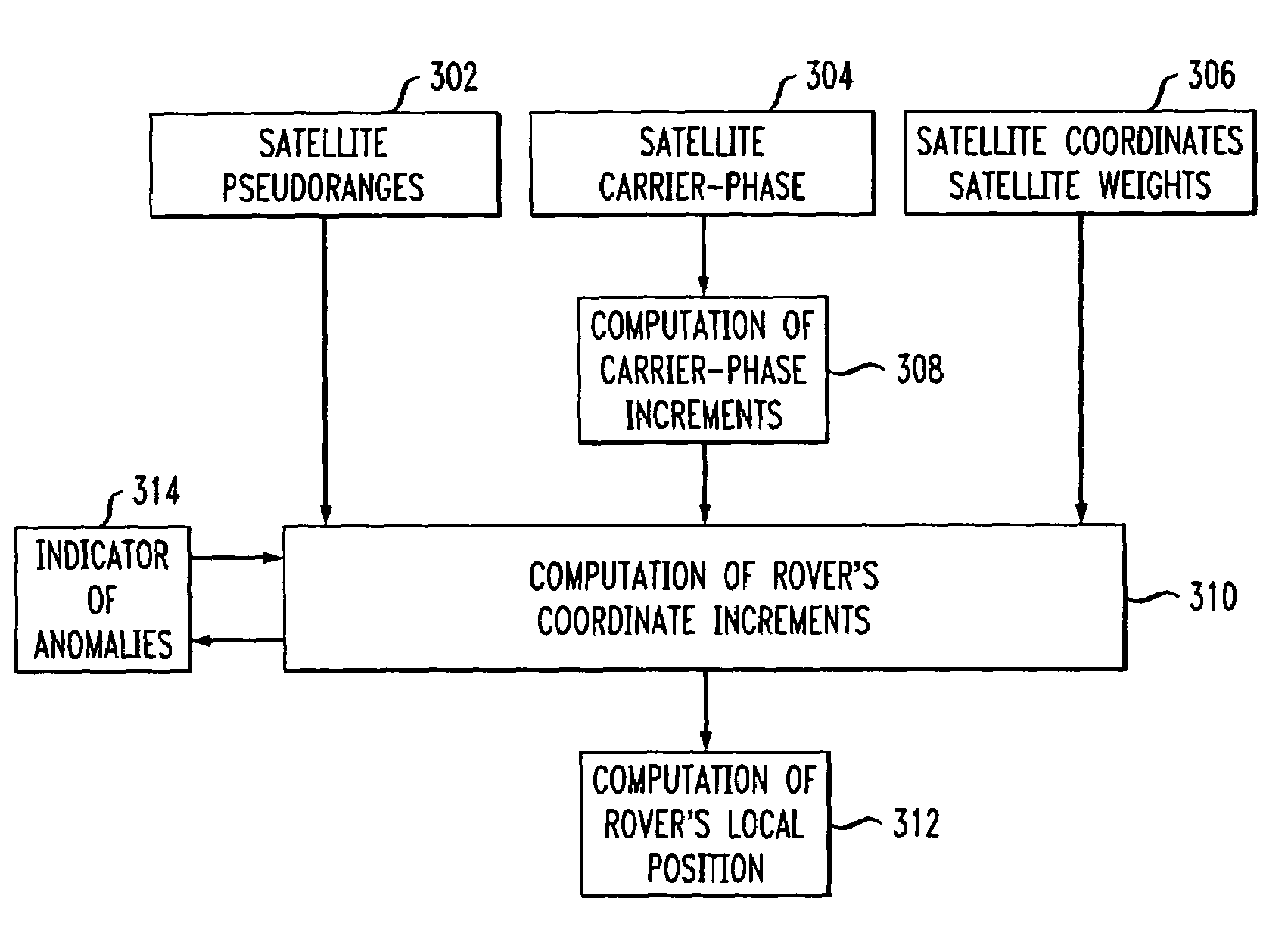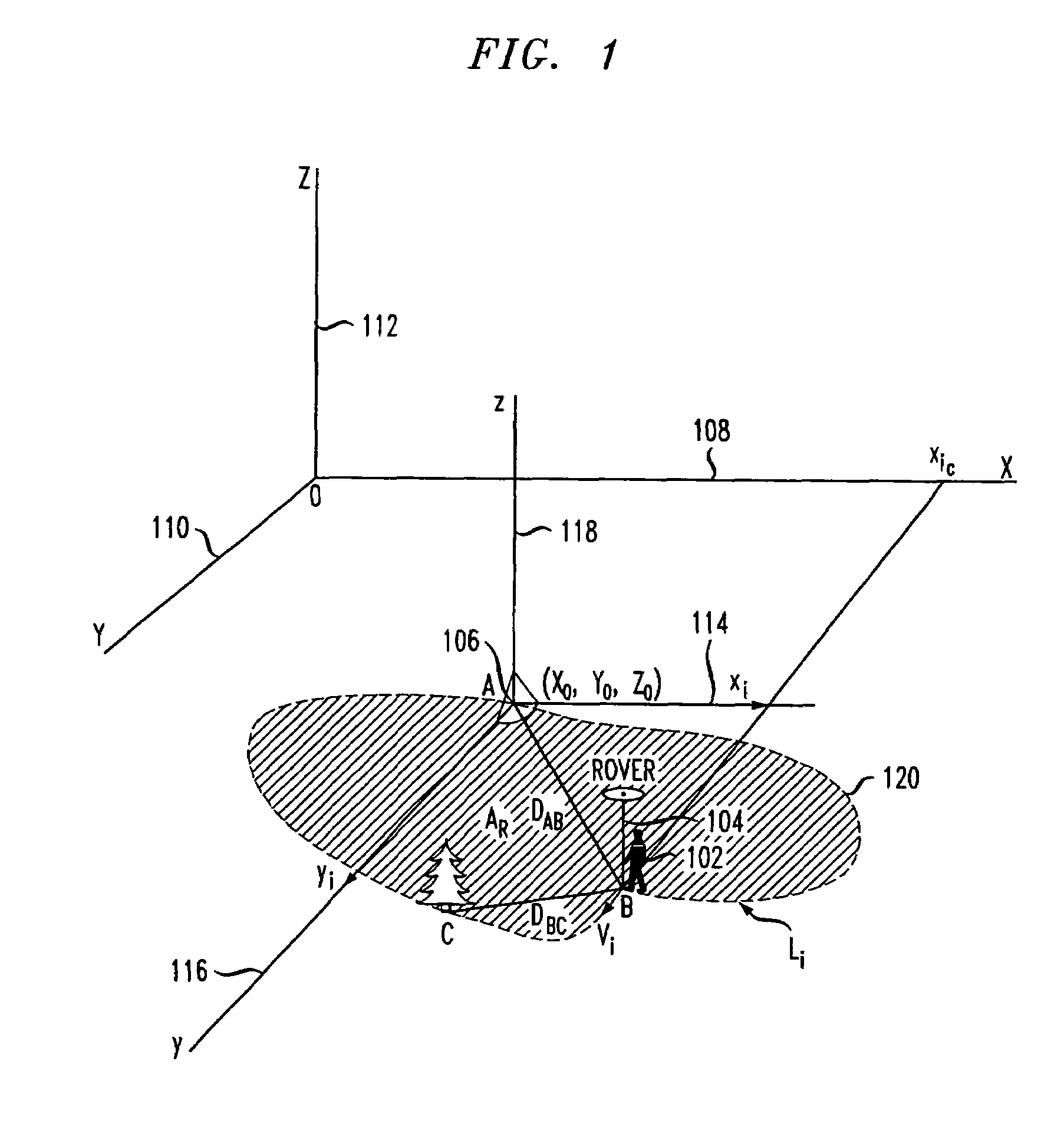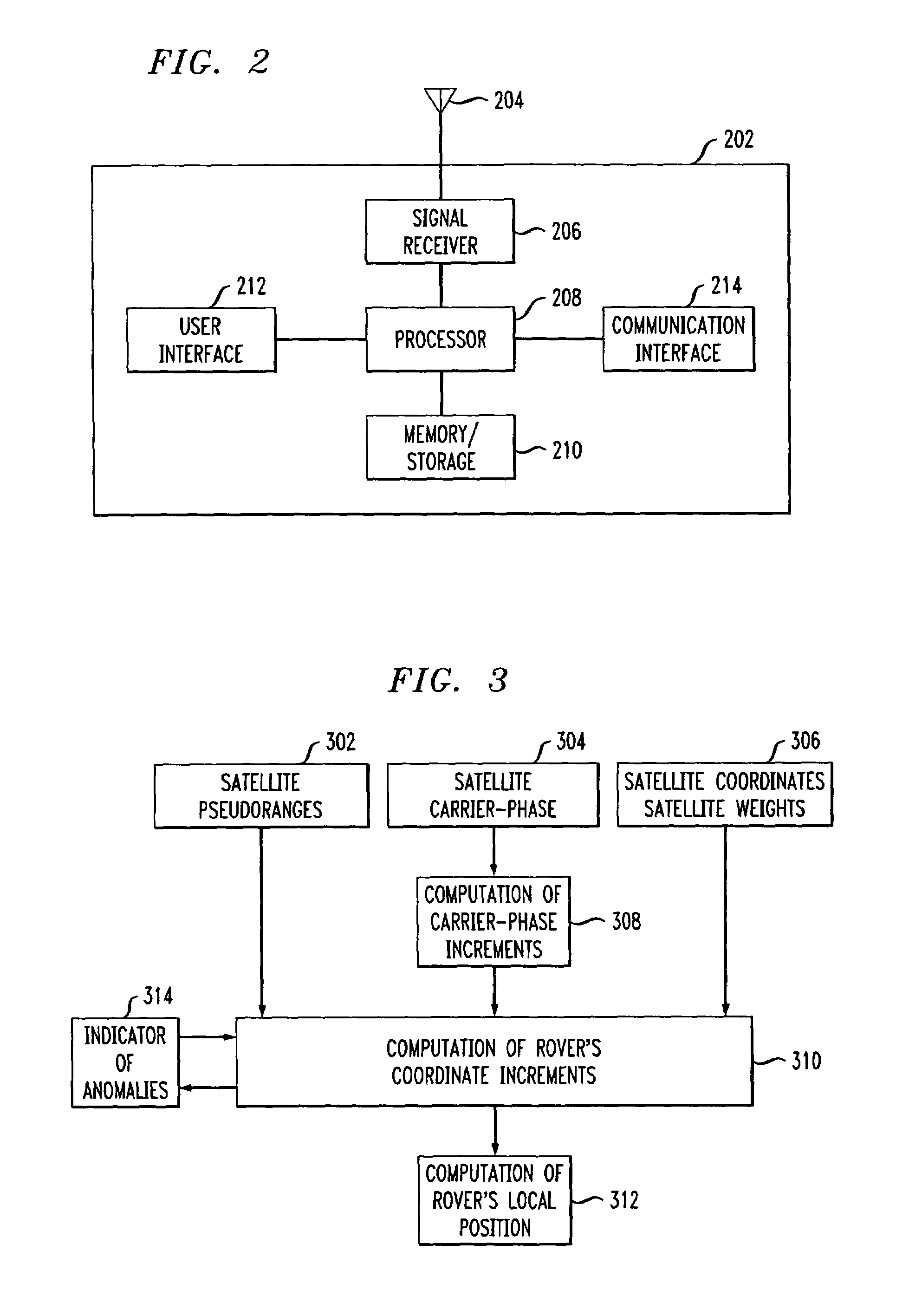Position determination using carrier phase measurements of satellite signals
a satellite signal and carrier phase technology, applied in surveying and navigation, instruments, navigation instruments, etc., can solve the problems of ambiguity resolution, the difference in the phase delay of a carrier signal received by the base and rover receivers may substantially exceed one cycle, and it is not possible to measure the integer number of cycles from the incoming satellite signal, so as to improve the relative position determination accuracy, without the cost and complexity of rtk systems
- Summary
- Abstract
- Description
- Claims
- Application Information
AI Technical Summary
Benefits of technology
Problems solved by technology
Method used
Image
Examples
first embodiment
[0077]The first embodiment is discussed in conjunction with the flowchart of FIG. 6. The algorithm computes residuals NEVi[j] in step 601 as described above in conjunction with processing block 509 (FIG. 5). In each satellite channel, the magnitudes of residuals (after completion of iterations) are compared to the threshold in step 602. If the threshold is not exceeded by the residual modulo of any channels (as determined in step 604) then the algorithm ends. If the threshold is exceeded by the residual modulo on at least one channel, then in step 606 a search is performed for the satellite channel with the maximum residual. In step 608 the channel weight for the current and following epoch is set to zero for the satellite channel identified in step 606. (In an alternate embodiment, the channel weight for only the current epoch is set to zero if the residual of the satellite channel identified in step 606 is below another defined threshold.) Matrix G is then recomputed in step 610 w...
second embodiment
[0078]The second embodiment is discussed in conjunction with the flowchart of FIG. 7. The algorithm computes residuals NEVi[j] in step 701 as described above in conjunction with processing block 509 (FIG. 5). In step 700, the sum of residuals squares (S NEVi) over all satellite channels is computed. The sum of residuals squares is compared to the threshold in step 702. If the threshold is not exceeded (as determined in step 704) then the algorithm ends. If the threshold is exceeded, then in step 706 a search is performed for the satellite channel with the maximum residual. In step 708 the channel weight for the current and following epoch is set to zero for the satellite channel identified in step 706. (In an alternate embodiment, the channel weight for only the current epoch is set to zero if the residual of the satellite channel identified in step 706 is below another defined threshold.) Matrix G is then recomputed in step 710 while eliminating the satellite channel identified in ...
PUM
 Login to View More
Login to View More Abstract
Description
Claims
Application Information
 Login to View More
Login to View More - R&D
- Intellectual Property
- Life Sciences
- Materials
- Tech Scout
- Unparalleled Data Quality
- Higher Quality Content
- 60% Fewer Hallucinations
Browse by: Latest US Patents, China's latest patents, Technical Efficacy Thesaurus, Application Domain, Technology Topic, Popular Technical Reports.
© 2025 PatSnap. All rights reserved.Legal|Privacy policy|Modern Slavery Act Transparency Statement|Sitemap|About US| Contact US: help@patsnap.com



